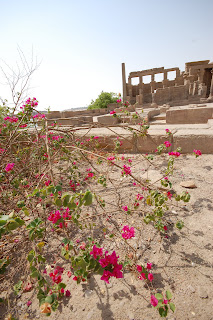
Tunisia is very interesting and was nothing like I expected. Actually I’m not even sure what I expected. Originally I was going to stay in Tunis for only a few days and then travel around the rest of the country but have found out that Tunisia is small enough to use Tunis as my base to explore the rest of the country, similar as I did with my stay in Egypt. My host in Egypt showed me the behind the scenes of the crazy life in Cairo revealing to me new layers of Egypt that I would never been able to access and I’ve been fortunate to have this same experience here.
I’ve been here in Tunis about a week now and at first stayed with a very nice girl and her family in a pretty modern and European influenced home in a suburb called Marouj. My first impressions of the city was how incredibly European it seems (or maybe I just have incredible culture shock from the disorganization of Egypt).Within the new part of the city a tree-lined avenue boulevard with outdoor cafes filled with men smoking and drinking tea or espressos leads to the Port Du France or Bab Bahr, which leads into the medina. The colonial French influenced grid becomes a labyrinth with covered passageways and overhead arches filled with a hodgepodge of people buying and selling everything from used shoes to traditional marriage supplies to tourist souvenirs.
The medina itself is a UNESCO World Heritage site; with some areas being almost too artificially preserved and others looking like it has been untouched since its inception under the control of Arab Muslims in the 7th century. The streets are only a few feet wide at some places and are not built to fit motorcycle or bicycles and definitely not cars, unlike the Islamic quarter of Cairo which people try to fit these modes of transport along with numerous people like sardines down the tight alleyways.
The city of Tunis, along with the City Maintenance Association created a cultural route (packed jammed with tourists) that extends over 1 km which included the re-painting of doors and windows, rewiring of electricity and lighting, refining arches, corridors and vaults to the rebuilding of historic monuments. The cost of the project cost over 2 million euros.
Walking in the medina, I feel at peace (minus the “nee-hows” and “kanichiwas”) with its white walls and the only elements of decoration on the facades being the colorful doors and windows. But behind these walls is a whole other world, which I’ve been extremely fortunate to be able to explore. A lot of people visit the medina without getting a chance to go behind these doors as they are private residences.
As I enter behind these doors, I am greeted with an open courtyard with rooms surrounding this courtyard – all the rooms with natural ventilation, keeping cold during the summer and warm during the winter. I am greeted with a few bedrooms, kitchen, and common space. Blue frames surround doorways and windows with ceramic tiles in a blue, black and yellow tiled pattern on some of the walls.

Occasionally I stumble along a public square which reminds of me piazzas in Europe – but the public squares I’ve seen so far are used as cultural gathering centers, where there are performances and exhibitions during the day and night.
Now I am currently living in a traditional Tunisian home rocking out in the Casbah (anyone get the title reference?). The casbah is an older quarter of many cities in North Africa. The one in Tunis is right next to the old medina, which makes a great base for my exploration of medina and new city.
I feel like I have seen the many facades of Tunis – from the old labyrinth that is the Medina to the new grid that was created by the French when they took over to the newer modern suburbs such as Marouj built in the last ten years, to Melassine a slightly richer neighborhood built in the last fifty years, to Carthage and La Goulette, which are very high end suburbs by the water which is home to Tunis’s elite.

The past week has been more of a cultural experience and I’ve made it a mission to have purposeful interaction with locals, participating and discovering how Tunisians live rather than wandering aimlessly from site to site. I think that the lifestyle here is more in tune with my lifestyle than in Cairo. There is a work to live mentality here (at least with the people I’ve met) than a live to work one, which is often seen in the USA. I’m a little tired of the consumerist culture in American- the need to buy a house, have possessions and loads of money. I’m slowly coming to find that it is not the way I want to live; instead I would rather be poor and have meaningful and purposeful human interactions, helping others and promoting peace and understanding. Being here has made even more concrete this belief.














































